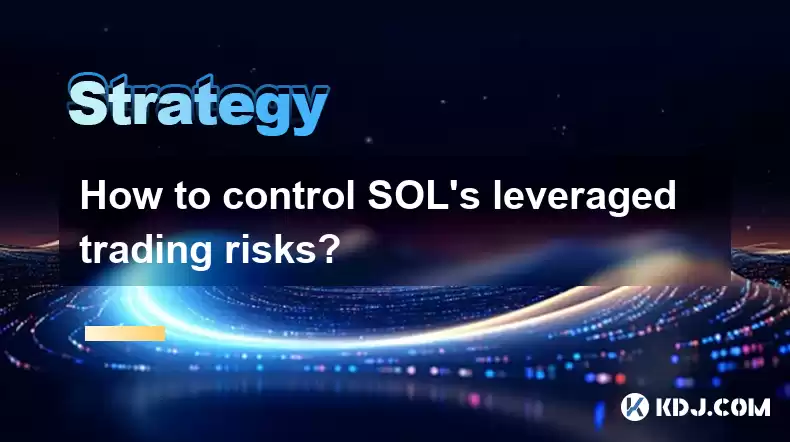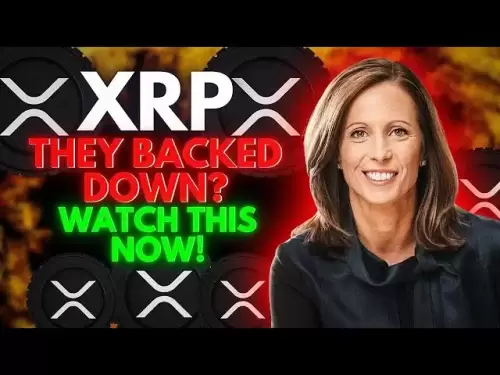-
 Bitcoin
Bitcoin $117500
2.15% -
 Ethereum
Ethereum $3911
6.19% -
 XRP
XRP $3.316
10.79% -
 Tether USDt
Tether USDt $1.000
0.01% -
 BNB
BNB $787.2
2.24% -
 Solana
Solana $175.2
4.15% -
 USDC
USDC $0.9999
0.00% -
 Dogecoin
Dogecoin $0.2225
8.40% -
 TRON
TRON $0.3383
0.28% -
 Cardano
Cardano $0.7868
6.02% -
 Stellar
Stellar $0.4382
9.34% -
 Hyperliquid
Hyperliquid $40.92
7.56% -
 Sui
Sui $3.764
7.63% -
 Chainlink
Chainlink $18.48
10.66% -
 Bitcoin Cash
Bitcoin Cash $582.1
1.88% -
 Hedera
Hedera $0.2601
6.30% -
 Avalanche
Avalanche $23.33
4.94% -
 Ethena USDe
Ethena USDe $1.001
0.02% -
 Litecoin
Litecoin $122.3
2.04% -
 UNUS SED LEO
UNUS SED LEO $8.969
-0.27% -
 Toncoin
Toncoin $3.339
0.86% -
 Shiba Inu
Shiba Inu $0.00001287
4.30% -
 Uniswap
Uniswap $10.43
7.38% -
 Polkadot
Polkadot $3.861
5.08% -
 Dai
Dai $1.000
0.02% -
 Bitget Token
Bitget Token $4.513
3.41% -
 Monero
Monero $267.7
-6.18% -
 Cronos
Cronos $0.1499
4.14% -
 Pepe
Pepe $0.00001110
5.15% -
 Aave
Aave $284.9
8.28%
How to control SOL's leveraged trading risks?
Leveraged trading with SOL can amplify returns but also risks; use stop-loss orders, manage leverage, diversify, and regularly review strategies to control these risks effectively.
Apr 19, 2025 at 06:49 pm

Introduction to Leveraged Trading with SOL
Leveraged trading with Solana (SOL) allows traders to amplify their potential returns by borrowing funds to increase their trading position. While this can lead to significant profits, it also comes with heightened risks. Understanding and managing these risks is crucial for anyone engaging in leveraged trading with SOL. This article will explore various strategies and tools to help control these risks effectively.
Understanding Leverage and Its Risks
Leverage in the context of SOL trading refers to the use of borrowed capital to increase the potential return of an investment. For example, if a trader uses 10x leverage, they can control a position worth 10 times their initial investment. However, this also means that losses can be magnified by the same factor. If the market moves against the trader's position, they could lose more than their initial investment.
The primary risks associated with leveraged trading include market volatility, liquidation, and margin calls. Market volatility can lead to rapid price changes, which can trigger liquidation if the trader's position moves against them. A margin call occurs when the account balance falls below the required margin level, prompting the exchange to demand additional funds or liquidate the position to cover the losses.
Setting Stop-Loss Orders
One of the most effective ways to control risks in leveraged trading is by using stop-loss orders. A stop-loss order automatically closes a trade when the price reaches a predetermined level, limiting potential losses. To set a stop-loss order for SOL trading, follow these steps:
- Choose a reliable trading platform that supports stop-loss orders for SOL.
- Determine the stop-loss level based on your risk tolerance and market analysis. For example, if you buy SOL at $100 and are willing to risk a 5% loss, set your stop-loss at $95.
- Enter the stop-loss order in your trading platform. This can usually be done through the order entry interface, where you specify the stop price and the quantity of SOL to sell.
- Monitor the market and adjust your stop-loss order if necessary. As the price of SOL moves in your favor, you may want to trail the stop-loss to lock in profits.
Using Take-Profit Orders
In addition to stop-loss orders, take-profit orders can help manage risks by automatically closing a trade when a certain profit level is reached. This ensures that you lock in gains before the market reverses. To set a take-profit order for SOL trading, follow these steps:
- Determine the take-profit level based on your profit target and market analysis. For example, if you buy SOL at $100 and aim for a 10% profit, set your take-profit at $110.
- Enter the take-profit order in your trading platform. This is usually done through the same order entry interface used for stop-loss orders, where you specify the target price and the quantity of SOL to sell.
- Monitor the market and adjust your take-profit order if necessary. If the price of SOL continues to rise, you may want to move your take-profit level higher to capture more gains.
Managing Margin and Leverage Levels
Proper management of margin and leverage levels is essential for controlling risks in SOL leveraged trading. Using lower leverage levels can reduce the likelihood of liquidation and margin calls. Here are some strategies for managing margin and leverage:
- Start with lower leverage: If you're new to leveraged trading, consider starting with 2x or 3x leverage instead of higher levels. This reduces the risk of significant losses.
- Monitor your margin level: Keep an eye on your account's margin level to ensure it remains above the required threshold. Most trading platforms provide real-time margin information.
- Adjust leverage based on market conditions: If the market becomes highly volatile, consider reducing your leverage to minimize risk. Conversely, in a stable market, you might increase leverage to maximize potential returns.
- Use margin calculators: Many trading platforms offer margin calculators that help you understand how different leverage levels and position sizes affect your margin requirements.
Diversifying Your Trading Portfolio
Diversification is another key strategy for controlling risks in SOL leveraged trading. By spreading your investments across different assets, you can reduce the impact of a single trade going wrong. Here are some ways to diversify your SOL trading portfolio:
- Trade multiple cryptocurrencies: In addition to SOL, consider trading other cryptocurrencies such as Bitcoin (BTC), Ethereum (ETH), or smaller altcoins. This can help balance your risk exposure.
- Use different trading strategies: Combine leveraged trading with other strategies, such as long-term holding or swing trading, to diversify your approach.
- Invest in different market segments: Consider trading assets in different market segments, such as decentralized finance (DeFi) tokens or non-fungible tokens (NFTs), to spread your risk.
Regularly Reviewing and Adjusting Your Trading Strategy
Finally, regularly reviewing and adjusting your trading strategy is crucial for managing risks in SOL leveraged trading. The cryptocurrency market is dynamic, and what works today may not work tomorrow. Here are some steps to take:
- Keep a trading journal: Record your trades, including entry and exit points, leverage used, and outcomes. This helps you identify patterns and areas for improvement.
- Analyze your performance: Regularly review your trading journal to assess your performance. Look for common mistakes and successful strategies.
- Stay informed: Keep up with market news and developments that could impact SOL and other cryptocurrencies. This can help you make more informed trading decisions.
- Adjust your strategy: Based on your analysis and market conditions, make adjustments to your trading strategy. This might involve changing your leverage levels, adjusting your stop-loss and take-profit orders, or diversifying your portfolio further.
Frequently Asked Questions
Q1: Can I use the same risk management strategies for other cryptocurrencies?
A1: Yes, many of the risk management strategies discussed for SOL, such as using stop-loss and take-profit orders, managing leverage, and diversifying your portfolio, can be applied to other cryptocurrencies. However, each cryptocurrency may have unique characteristics and market behaviors, so it's important to adapt your strategies accordingly.
Q2: How often should I review my trading strategy?
A2: It's recommended to review your trading strategy at least weekly, especially if you're actively trading. However, in highly volatile markets, daily reviews might be necessary to adjust your positions and risk management strategies promptly.
Q3: What should I do if I experience a margin call?
A3: If you experience a margin call, you have two options: deposit more funds to meet the margin requirements or close some of your positions to reduce your exposure. It's crucial to act quickly to avoid liquidation. Regularly monitoring your margin levels can help you anticipate and prevent margin calls.
Q4: Is it possible to trade SOL with leverage without using borrowed funds?
A4: No, leveraged trading inherently involves borrowing funds to amplify your trading position. If you want to trade SOL without leverage, you can engage in spot trading, where you only use your own capital. However, this limits your potential returns and does not involve the same level of risk as leveraged trading.
Disclaimer:info@kdj.com
The information provided is not trading advice. kdj.com does not assume any responsibility for any investments made based on the information provided in this article. Cryptocurrencies are highly volatile and it is highly recommended that you invest with caution after thorough research!
If you believe that the content used on this website infringes your copyright, please contact us immediately (info@kdj.com) and we will delete it promptly.
- Tron's Sell-Off Spurs Altcoin Shift: What's Next for TRX?
- 2025-08-08 08:30:12
- Sleep Token's US Takeover: Thornhill Rides the 'Even In Arcadia' Wave
- 2025-08-08 08:30:12
- FTT Token's Wild Ride: Creditor Repayments vs. Market Drop - A New Yorker's Take
- 2025-08-08 07:10:12
- Floki Crypto Price Prediction: Riding the Robinhood Rocket or Just a Meme?
- 2025-08-08 07:15:12
- EigenLayer, Restaking, and Ethereum: Navigating the Hype and the Hazards
- 2025-08-08 06:30:12
- Super Bowl 59: Jon Batiste to Jazz Up the National Anthem
- 2025-08-08 06:30:12
Related knowledge

How to avoid common crypto investment mistakes?
Jul 13,2025 at 01:35am
Understanding the Risks of Crypto InvestmentInvesting in cryptocurrency can be highly rewarding, but it also comes with significant risks. One of the ...

What is a long-short crypto strategy?
Jul 15,2025 at 10:56am
Understanding the Basics of a Long-Short Crypto StrategyA long-short crypto strategy is an investment approach where traders simultaneously take long ...

What is a long-short crypto strategy?
Jul 11,2025 at 01:28pm
Understanding the Basics of Long-Short Crypto StrategyA long-short crypto strategy is an investment approach where traders take both long and short po...

How to use the RSI indicator for crypto?
Jul 12,2025 at 03:56pm
Understanding the RSI Indicator in Cryptocurrency TradingThe Relative Strength Index (RSI) is a momentum oscillator used to measure the speed and chan...

Is copy trading a good strategy for crypto beginners?
Jul 12,2025 at 08:28am
Understanding Copy Trading in the Cryptocurrency MarketCopy trading is a strategy where novice traders replicate the trades of experienced investors a...

How to build a crypto portfolio with $1000?
Jul 13,2025 at 08:14pm
Understanding the Basics of Cryptocurrency InvestmentBuilding a crypto portfolio with $1000 starts with understanding the fundamentals of cryptocurren...

How to avoid common crypto investment mistakes?
Jul 13,2025 at 01:35am
Understanding the Risks of Crypto InvestmentInvesting in cryptocurrency can be highly rewarding, but it also comes with significant risks. One of the ...

What is a long-short crypto strategy?
Jul 15,2025 at 10:56am
Understanding the Basics of a Long-Short Crypto StrategyA long-short crypto strategy is an investment approach where traders simultaneously take long ...

What is a long-short crypto strategy?
Jul 11,2025 at 01:28pm
Understanding the Basics of Long-Short Crypto StrategyA long-short crypto strategy is an investment approach where traders take both long and short po...

How to use the RSI indicator for crypto?
Jul 12,2025 at 03:56pm
Understanding the RSI Indicator in Cryptocurrency TradingThe Relative Strength Index (RSI) is a momentum oscillator used to measure the speed and chan...

Is copy trading a good strategy for crypto beginners?
Jul 12,2025 at 08:28am
Understanding Copy Trading in the Cryptocurrency MarketCopy trading is a strategy where novice traders replicate the trades of experienced investors a...

How to build a crypto portfolio with $1000?
Jul 13,2025 at 08:14pm
Understanding the Basics of Cryptocurrency InvestmentBuilding a crypto portfolio with $1000 starts with understanding the fundamentals of cryptocurren...
See all articles

























































































